Let’s take a look at psychopaths, sociopaths and narcissists in fiction, or rather: How people with malignant personality disorders dominate popular culture.
Why are we so interested in them? Are they really that interesting? And how does the conversation around popular storytelling contribute to how we (armchair psychologists) conceive of the most violent, unempathetic people in our society? Even when personality disorders are not named ‘on the page’, fiction influences how we try to understand such people, and may even extend empathy where none is warranted.
Lay people sometimes turn to the (easily accessible) DSM for a browse, but the DSM is specifically made for diagnosing and research psychologists, and no one can expect to find it useful without years of training. Aside from that, the DSM does a very poor job of describing personality disorders, especially those listed here today.
That’s because these personality disorders are ego-syntonic, not ego-dystonic, like other disorders.
Ego-Syntonic: Instincts or ideas that are acceptable to the self, compatible with one’s values and ways of thinking. People with ego-syntonic personality disorders don’t tend to find themselves in front of therapists because they don’t feel there’s anything wrong with them. However, they may end up seeking therapy for the reason that everyone else around them is failing to live up to their standards (or be controlled by them). They are more likely to appear in couples therapy. They may come in when they’re about to lose something big e.g. employment or a relationship. In these cases they present to learn how to prove a point to somebody else. There’s a real danger that the malignant narcissist therapy learn from their therapist how to better manipulate. This toxic dynamic was shown in The Sopranos between Tony and his therapist, who eventually works out that Tony is using her to this end. The closer the narcissistic client to sociopathy, the harder they are to help. Therapists and treating psychologists use a variety of tools to determine a client’s capacity for change. Some narcissists are able to change their behaviours even though they will never develop warm (affective) empathy.
Aside from narcissism, sociopathy and psychopathy, anorexia nervosa is often an ego-syntonic disorder, because the patient sees no problem with their own weight loss, and in fact sees being underweight as desirable.
Ego-Dystonic: Instincts or ideas that are acceptable to the self, and which are incompatible with one’s values and ways of thinking.
What this means in effect: A subjective experience of it is less accurate than diagnosing it through behaviours. When talking about psychopaths, sociopaths and narcissists, it’s far more helpful to analyse their behaviours rather than referring to something like the DSM.
Most of us are not psychologists. Most of us get our ideas about personality disorders from fiction (including me).
Compared to what psychologists say about these disorders, let’s talk about how writers create characters which prompt audiences to think about real life people with personality disorders. Today I’ll be sharing notes from a variety of experts which I’ve found thought-provoking over the years.
But first, let’s talk about the evil in all of us.
THE EVIL IN ORDINARY CHARACTERS
Are we all capable of evil? is a podcast interview from Australia’s ABC with Julia Shaw:
[The potential for evil in us all] is a theme which has beguiled writers and philosophers since time immemorial. Is there such a thing as evil? And if there is does it reside deep within us all, waiting to be fuelled by circumstance? Julia Shaw has made a career from understanding criminal behaviour and her latest book is called Making Evil: The Science Behind Humanity’s Dark Side.
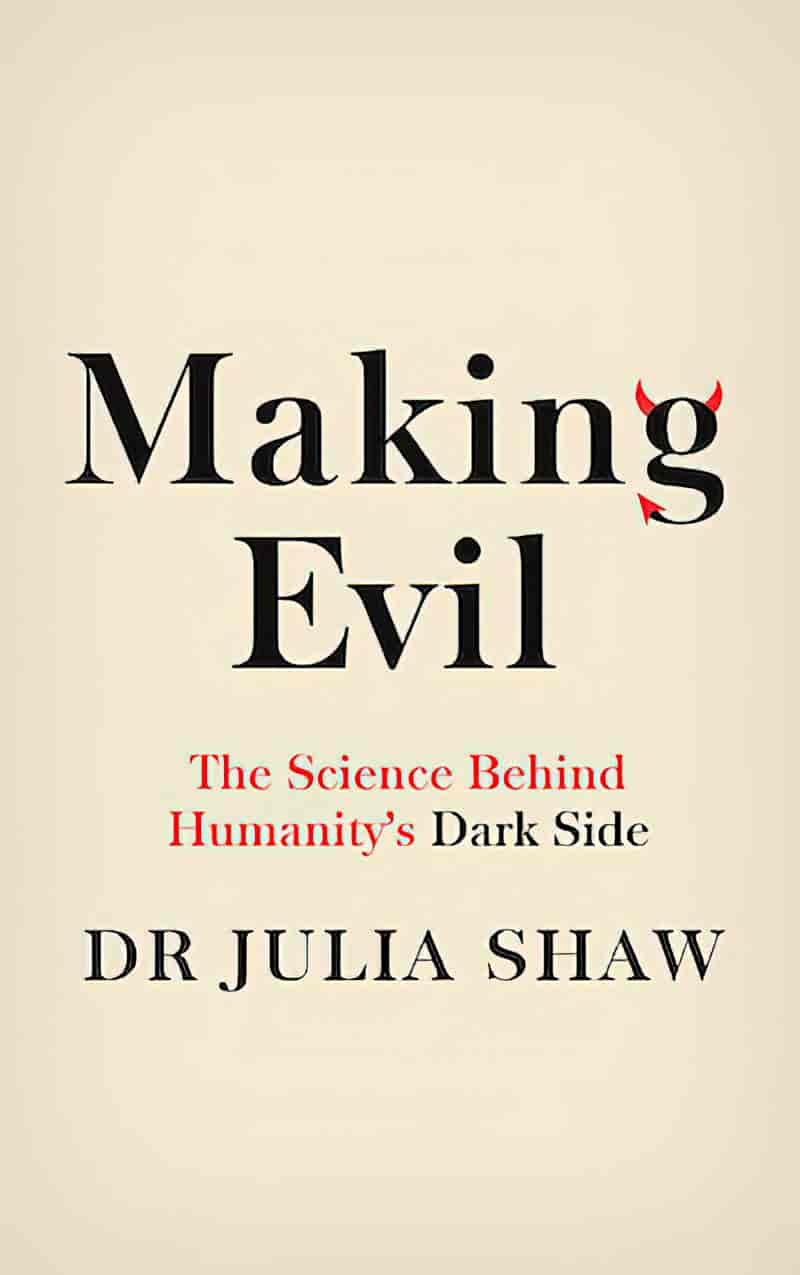
MAKING EVIL: THE SCIENCE BEHIND HUMANITY’S DARK SIDE
In Making Evil, Julia Shaw uses a mix of science, popular culture and real-life examples to investigate the darker side of human nature. How similar is your brain to a psychopath’s? How many people have murder fantasies? Can AI be evil? Do your sexual proclivities make you a bad person? Who becomes a terrorist? This is a surprising and wickedly entertaining exploration of a darkly compelling subject.
Dr Julia Shaw is a scientist in the Department of Psychology at University College London (UCL). Her academic work, teaching and role as an expert witness have focused on different ways of understanding criminal behaviour. Dr Shaw has consulted as an expert on criminal cases, delivered police-training and military workshops, and has evaluated offender diversion programmes.
A CASE FOR ACCEPTANCE
Things that don’t make you a bad person:
- Displaying “scary” symptoms of mental illness
- Being diagnosed with multiple disorders
- Having one or various personality disorders
- Being diagnosed with NPD, BPD, HPD, or ASPD
- Having very low empathy, or no empathy
- Having symptoms that cause anger, emptiness, or paranoia
- Having triggers or “strange” personal boundaries
- Needing extra help or accommodations
- Having intrusive thoughts about upsetting or scary topics
A CASE FOR FEWER PERSONALITY DISORDERS IN FICTION
Stupidity is the same as evil if you judge by the results.
Margaret Atwood
BONHOEFFER’S THEORY OF STUPIDITY
Margaret Atwood’s comment reflects Bonhoeffer’s Theory of Stupidity, which holds that evil can be guarded against but stupidity cannot. The world has relatively few evil people and collectively they have little power. However, their power multiplies when they’re able to rope in the world’s vast numbers of stupid people. As a result, stupidity is a far greater threat than evil.
Rather than focusing on the malignant narcissists of this world, perhaps stories should focus instead of the lives of the ‘manipulated stupid people’. Only then, might we recognise ourselves in them and self-reflect.
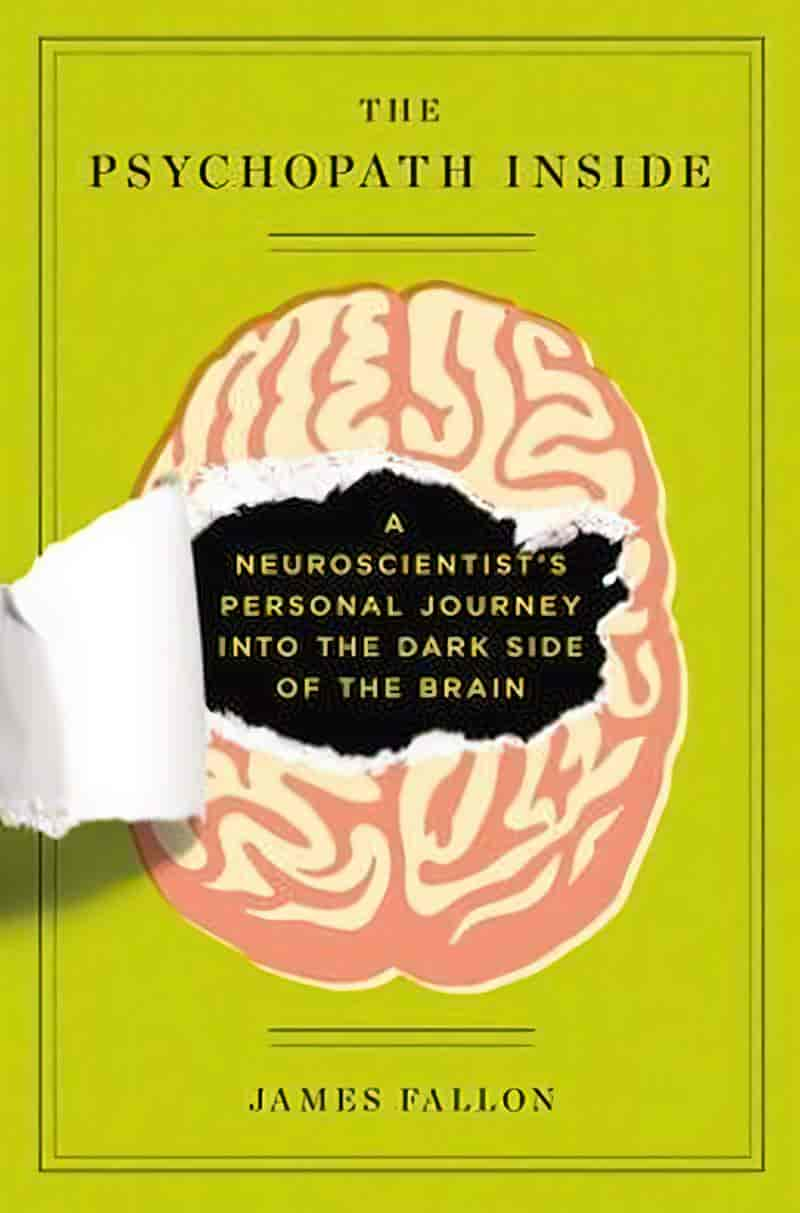
THE PSYCHOPATH INSIDE
For the first fifty-eight years of his life James Fallon was by all appearances a normal guy. A successful neuroscientist and medical school professor, he’d been raised in a loving, supportive family, married his high school sweetheart, and had three kids and lots of friends.
Then he learned a shocking truth that would not only disrupt his personal and professional life, but would lead him to question the very nature of his own identity.
The Psychopath Inside tells the fascinating story of Fallon’s reaction to the discovery that he has the brain of a psychopath. While researching serial murderers, he uncovered a distinct neurological pattern in their brain scans that helped explain their cold and violent behavior. A few months later he learned that he was descended from a family with a long line of murderers which confirmed that Fallon’s own brain pattern wasn’t a fluke.
Are psychopaths really that interesting?
Have we not seen enough in real life without pursuing them in fiction? Do we not all realise by now, the once shocking message that psychopaths live among us, that he could easily be the guy next door?
I’m not a scientist studying how to recognize or stop serial killers. I don’t need to know why he killed. It’s not that complicated. He wanted to and he did. Same reason any of them do it. I don’t give a shlt. Maybe I’m biased because I hear “I’m obsessed with serial killers” in the same voice as I hear “I’m obsessed with cults.” And I know what the people who are obsessed with cults say next.
Serial Killers Aren’t That Interesting by Lauren Hough
Bonhoeffer’s Theory of Stupidity relates to another phenomenon called Noble Cause Corruption which holds that the greatest evils come not from people seeking to do bad, but from people seeking to do good, but believing the ends justify the means. At the heart of this phenomenon is a huge irony: Immoral treatment to avoid immoral treatment. Few things in life legitimise the immoral treatment of others more than the belief that you are more moral than others.
HANLON’S RAZOR
This thought trap holds that the number of genuinely evil people in the world is minuscule compared to the number of idiots, so never blame on malice what can be adequately explained by stupidity.
Also, we must not be too quick to slap personality disorders on people who do terrible things. A personality disorder is no requirement. By labelling someone a narcissist or a psychopath, we turn them into the unknowable Other, which is unhelpful in dealing with them.
EVIL AND PRIVILEGE
We cannot treat those who mean to inflict harm with the same kid gloves we don when dealing with those who inflict harm out of sheer stupidity. Those are two completely different groups. We must call out the deliberately manipulative:
The vast, vast majority of the absolute shlttiest people you’ve ever heard of, had no psychiatric issues at all. They simply spent well over 10,000 hours learning how absolutely effective DARVO is in a society that already hates the people they victimize.
Medicalizing it, treating it as a problem of that individual, allows you to not ask why they were rewarded every time they used it, in every situation, by damn near everyone.
Less “why would he lie about this?” and more “why the fvck hasn’t even one person told him to knock it the fvck off and shut the fvck up”
Being outright viciously hostile to people trying to use DARVO, no matter their age, would do more to stem the never-ending fountain of a$$holes and utter dipshits than nearly anything else.
Your well-timed “shuttheFvCKup” when someone tries to pull that shit, may be the first time in that person’s miserable life that they’ve ever experienced it failing to work.
Tell a bully to shut the fvck up, and make him fear trying to pull that shlt again, does more than endlessly trying to throw the DSM at him to make it his problem and not a problem with the society that formed him.
@pookleblinky
WHAT IS NARCISSISM?
Of all the most dangerous personality disorders listed here, narcissism is perhaps the most difficult to get your head around. It doesn’t help that ‘narcissistic’ is the in vogue catchall insult for people we can’t stand.
In a world where most people prioritize their self-interest over that of others,
The Best in Every Way: A Clinical Diagnosis of Walter White by Emm D. Bergquist
it is easy today to find people living in a narcissistic state more often than they
do not. While the term narcissism may be used to describe a wide range of
intensities of this trait, clinical narcissism has a more rigid definition.
The definition is slightly biased towards a certain style of narcissism (grandiose) but here it is:
- Has a grandiose sense of self-importance
- Is preoccupied with fantasies of unlimited success, power, brilliance, beauty, or ideal love
- Believes that he or she is “special” and unique and can only be understood by, or shoudl associate with, other special or high-status people (or institutions).
- Requires excessive admiration.
- Has a sense of entitlement.
- Is interpersonally exploitative.
- Lacks empathy: is unwilling to recognize or identify with the feelings and needs of others.
- Is often envious of others or believes that others are envious of him or her.
- Shows arrogant, haughty behaviours or attitudes.
- Narcissists live in a completely different reality. Their memory of what happened, their interpretation of an event is different from yours, and will paint themselves in a good light. There is no persuading a narcissist that they may in fact be wrong. To admit a wrong interpretation would cut too closely to their underlying vulnerability. So what happens instead: People close to the narcissist will either come around to the narcissist’s take on things, or remove themselves. (This is where gaslighting comes into play.)
You don’t always know when you’re interacting with a narcissist. They can be charming, fun, interesting and interested in you. It might take you a while to pick it. The first clue is that you feel something is off. Some kind of doubt. You may feel manipulated, as if you’re going crazy, off-kilter, knocked off your feet.
The main trait of a narcissist is pathological insecurity. Everything else about behaviour derives from that, in combination with your temperament, your ‘wiring’, and your environment.
Narcissists have little access to their own interior world. They fail to understand their own emotions, so can’t understand emotions in others. This isn’t an all-or-nothing thing: Narcissists can feel emotion, but when they can, this will be focused on themselves, all about how they themselves feel rather than how others around them feel.
They tend to take what you say out of context. A big giveaway is they will frequently exaggerate your tone. They may mimic you in a nasty voice which you never used. They will try to shame or scare you into silence. You’ll likely find yourself talking/interacting less and less. You don’t feel safe sharing your opinion.
Narcissism (like almost everything) is a spectrum. Self esteem is regulated completely from the outside. This is common, to some degree, to all of us. But inside healthy individuals have a sense of self which is relatively solid. All of us need other people around us to buffer us, to make us feel valid. Narcissists are constantly in a state of looking for others to bolster them and provide worth.

NARCISSISTIC SCHEMAs
In psychology, a schema is a cognitive structure that contains an organized plan for an activity. (Plural: schemata or schemas.) A schema is a mental structure of preconceived ideas which leads someone to act in certain ways. The more narcissistic someone is, the more dangerous these schemata.
- Entitlement
- Grandiosity
- Defectiveness/Shame (A defectiveness schema is a core belief that makes you feel internally flawed in some critical way, that you are inherently wrong, and that you are therefore not lovable.)
- Mistrust/Abuse (a persistent and pervasive doubt that someone else isn’t playing with open cards, may want to take advantage of us, or will in some way harm us)
- Dependence
- Abandonment
Some narcissists are overly dependent on others. Many are terrified of abandonment.

NARCISSISTS AND EMPATHY
Some narcissists have typical levels of empathy. Others are very low. Narcissists can sit anywhere on the spectrum when it comes to empathy. To have a narcissistic personality disorder (NPD), someone needs to score highly on more than one aspect. Scoring high in entitlement, say, does not indicate narcissism. Scoring highly in all of the schemata, would.
Psychology is becoming more nuanced in its understanding of empathy. We now think in terms of two main types of empathy: affective and cognitive. Affective empathy means you understand what it feels like to be in someone else’s shoes. Cognitive empathy means you are intellectually able to understand why someone is feeling some way, but you don’t use your cognitive empathy to feel it.
These two branches of empathy are sometimes called warm empathy and cold empathy.


ALL NARCISSISTS ARE ADDICTS
[Narcissism is characterised by] grandiose self-views and a relentless addiction-like striving to continually assert their self-worth and superiority.
Morf, Horvarth and Torchetti (2011)
What are narcissists addicted to? Narcissistic supply: the need for constant interest from others. Other people must supply the narcissist with adulation, recognition and interest. Other people must also exist for the narcissist to have power and control over.
Narcissistic supply, for a narcissistic, is not just about getting positive feedback (adulation, compliments etc.) This is the big misconception. The NPD (full-blown) narcissist seeks complete control over others. They aim to create a world, with themselves at the centre, where everyone else behaves in predictable and fully controllable ways. Whether someone responds positively or negatively is beside the point for these people. Power and control over others is king. Imagine them with a remote control. They want to know that if they press your button, you’ll behave in a predictable way:
- Scare someone and they’ll be frightened
- Insult someone and they’ll take offence
- Hit someone and they’ll be injured
- Guilt trip someone and they’ll apologise
- Gaslight someone, they’ll be confused and give in
For a person with NPD, negative feedback is better than unpredictable or zero feedback. If they’re not expecting a compliment, praise or adulation, they won’t want it. They would rather see you cry and beg and scream.
Narcissists spend their lives conditioning others. They’re quiet scientists, learning what they must do to others to achieve predictable outcomes.
Everybody in the world is an extension of themselves. This is radically different from how most people view themselves in relation to others. (For able-bodied people), the closest we might come to understanding the frustration and anger of a narcissist is to imagine we reach for an object but our arm doesn’t work. It won’t reach out. When someone does not do what a narcissist wants them to do, the frustration is at that level. They really do feel like other people should do as they will them to do.

Another analogy: To the narcissist, other people are appliances put on Earth for their own use. The power and control is to ensure that their appliances will behave as expected, and to ensure the narcissist gets what they want, and what they feel entitled to.

THE DIFFERENT TYPES OF NARCISSIST
There are various subcategories of narcissist. They present differently, but are the same underneath. These types overlap and appear in combos. These categories are not hard lines.
CEREBRAL NARCISSISTS
These people believe themselves to be smarter than other people.
Cerebral narcissists get their narcissistic supply via their intelligence.

“You all know exactly who I am.”
“I am the one who knocks.”
“1,000 gallons of methylamine is worth more in my hands than it is in yours or anyone else’s, for that matter.”
Walter White, Breaking Bad
See also: Walter White Character Study

SOMATIC NARCISSISTS
Somatic means ‘related to the body’. Somatic narcissists are focused on appearance. You may find them at the gym, or in the cosmetic surgeon’s office.
Somatic narcissists get their narcissistic supply from their body and sexuality.

See also Pray Yourself Thin: While Jenny was trying hard to be a good Christian, she was hiding a secret shame — one that can be traced back to biblical times by Siobhan Martin at Australia’s ABC News.
COMMUNAL NARCISSISTS
The label of communal narcissism distinguishes between ‘agentic’ and ‘communal’ forms of narcissism. The word agentic refers to an individual’s power to control their own goals actions and destiny.
In agentic forms, narcissists satisfy self-motives of:
- grandiosity
- esteem
- entitlement
- power in agentic domains
The only difference is, in communal forms, narcissists satisfy these same self-motives in communal domains (with others).
Agentic: “I am the most intelligent person.”
Communal: “I am the most helpful person.”
Agentic narcissists pride themselves on their competence, extraversion, uniqueness.
Communal narcissists pride themselves on their warmth, agreeableness, relatedness.
(Narcissists are no smarter than anyone else as measured by both IQ and academic grades.)
This communal form of narcissism is just as grandiose as the more widely understood agentic forms of narcissism.
Selflessness is the vainest form of selfishness.
Russian Proverb
Gwen Shamblin was appearance focused, but also a good example of a communal narcissist. She built a church around her with the ostensible aim of doing good.
That’s what communal narcissists think they are doing when they’re going after their narcissistic supply by starting churches (cults), diet clubs and so on.
Communal narcissism highlights how, when we have no sense of self, it is never a good thing. Everyone needs a solid sense of self. We shouldn’t aim to shuck it off, because altruism is the most perfect form of egoism. They want to be known for all the good things they have done.
A communal narcissist will think things such as:
- I am the most helpful person I know.
- I’m going to bring peace and justice to the world.
- I am the most caring, the best friend anyone could have.
- I will be known far and wide for all the good things I have done.
- I want to be known for solving the world’s problems.
- I am an amazing listener.
- I have a very positive influence on others.
- I make the world a more beautiful place.
- I am super trustworthy.
- I’ll be famous for making people’s lives better.
Alice Munro’s character Allie McGee, as well as The Army Women in her 1968 short story “The Time of Death” might be considered examples of communal narcissists. The story also explores how living in a community can create narcissistic behaviours, exhibited by a bereft mother and, nascently, in a nine-year-old girl.
Since women are regularly seen as more communal and men as more agentic, we might predict that more agentic narcissists are men and more communal narcissists are women. However, due to a bunch of complicated factors, this isn’t the case. Communal narcissism is neither more masculine nor more feminine.
Remember, self-motives are the same for both agentic and communal narcissists: grandiosity, self-esteem, entitlement and power.
SELF-RIGHTEOUS NARCISSISTS
These people are the most judgemental people you’ll ever met. They are hyper-ethical, hyper-moral. Self-righteous narcissists know the ‘correct’ way to live and are very hard on people going through a hard time. They’ll say whatever tragedy comes your way is your own fault. If only you lived better.
Self-righteous narcissists are often drawn to organised religion, which provides a framework of morality, and reassures them that there is a correct and incorrect way to live.
Cult leaders are a combination of communal, self-righteous and malignant narcissism. This is a dangerous combination of personality styles because these people have immense power to draw victims into their orbit.
OVERT/GRANDIOSE NARCISSISTS
These people seem arrogant when you meet them. They seem full of themselves. We see these people on reality TV shows. They are frequently attracted to politics.

COVERT/VULNERABLE NARCISSISTS
These people don’t come across as grandiose. They may seem vulnerable or shy. They may present as the victim. Underneath, the issue is the same: shame and insecurity. They are resentful, sullen, vindictive, angry, always complaining, always criticising other people, envious of what others have. They don’t believe that other people have put in effort to get what they have. Instead, the covert narcissist feels the world is against them. If only they’d had the same opportunities, they too would be an accomplished/world-renowned whatever. Why does the world not appreciate their own genius?
There are two red flags to avoid almost all dangerous people: 1. The perpetually aggrieved ; 2. The angry.
Less Wrong
In contrast, the grandiose narcissist has no problem declaring their own genius. Grandiose narcissists are confident that everyone else can see what is so apparent to themselves.
Vulnerable narcissists aren’t as obvious to spot. It can take months of knowing one to understand that they fall into this personality style.
Dr Ramani (narcissism expert) thinks that ‘vulnerable narcissist’ is a more accurate term than ‘covert narcissist’, so while acknowledging the term, she prefers ‘vulnerable’. These people cannot take criticism and are plagued by vulnerability, which drives everything else. They’re not ‘covert’ to someone who is narcissism informed. Moreover, all kinds of narcissists have some level of ‘covertness’.
Covert narcissists are at their worst when things go badly for them. A difficult life event will confirm their view that the world is against them, so leaving them can be very difficult, especially if you’re the sort of person who feels the need to rescue people.

This type of narcissist is an introvert and correlates strongly with social anxiety. Take a vulnerable narcissist to a party and they will sit in the corner and be miserable about it — miserable about parties in general. (Someone who is simply socially anxious is not also mean about it.)
If a vulnerable narcissist controls a household, they are very good at isolating the entire household from the rest of society. This is dangerous. No one is looking in to see what’s going on.
Against intuition, perhaps, covert/vulnerable narcissists are less empathic than the overt/grandiose group. Neediness is at the core, in which case the world still revolves around them. Everyone must take care of them.

I don’t read Tanya as a malignant narcissist, which is why she is fun to watch. Tanya is somewhat relatable.
Where malignant narcissism meets vulnerable narcissism, though? That’s dangerous. Dr Ramani considers this the most deadly of the combinations.
For those who’ve seen Mad Men, David McRaney on the You Are Not So Smart podcast offers Don Draper as the perfect example of a covert (vulnerable) narcissist and how the show explores him dealing with threats to his sense of self.
See: Why narcissism isn’t excessive self-love but excessive self-loathing, a rebroadcast of How new research suggests narcissism isn’t excessive self-love but excessive self-loathing.


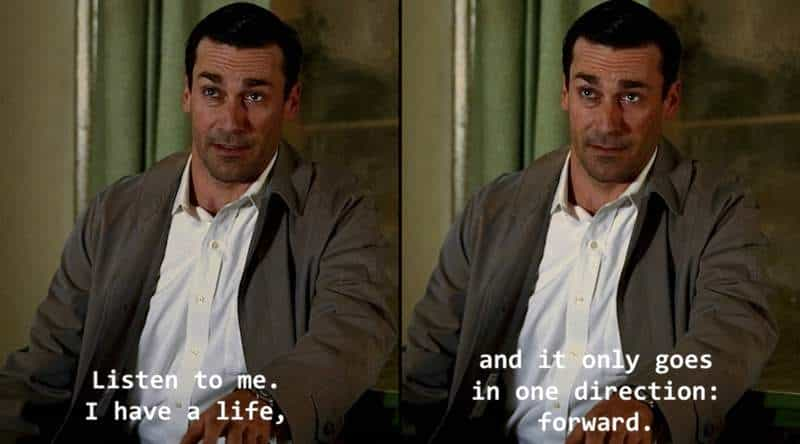


Mad Men is full of characters with personality disorders, as pointed out by choric figure Miss Blankenship.



Although vulnerable narcissists present differently from other types of narcissists, their narcissism will out itself over time.
Are all narcissists in some way vulnerable? Narcissism is both an entitlement disorder and a shame disorder. Narcissists are walking contradictions. On one level, their narcissistic schemata are defence mechanisms. Their grandiosity is a defence against feelings that they’re split from themselves (powerlessness, impotence, a feeling of spiralling out of control). Narcissists are extremely dependent on the external world. They are not self-contained people who leave others live and let live.
When you’re very dependent on someone (or something) you grow to despise it. (This is true not only of narcissists.)
Grandiosity comes from the inability to see themselves as powerful and invincible. It’s a coping mechanism. However, this self-delusion is impossible to maintain full-time. Narcissists therefore oscillate between deep feelings of shame around needing others and feeling out of control.
Things will happen in a narcissist’s life which illuminate what is called their own ‘grandiosity gap’: the difference between how they wish to see themselves (independent, powerful, in control) and how they actually are (highly dependent, no more powerful than any other regular person, not in control). The grandiosity gap will be illuminated when, say, someone in their orbit does not respond how they expected or how they wish them to. The grandiosity is fragile, which is what makes them vulnerable.
This grandiosity gap leads to shame, and shame is one of the most painful emotions humans experience. It also leads to feelings of great anger.
That’s why narcissists become addicts. They’ll do anything to avoid those painful feelings of shame and anger. In therapy, someone with NPD may vacillate between feeling entitled and angry that people aren’t complying as they wish, with odd flashes of vulnerability.
Narcissists are notoriously difficult to deal with in therapy, but covert narcissists are a lot easier to get in touch with. The overt/grandiose narcissist has a much stronger grandiosity defence. Those flashes of insight are very few and far between.
MALIGNANT NARCISSISTS
Some psychologists say that malignant narcissism and sociopathy are the same thing. This category of narcissist scores very low on affective empathy (but high in cognitive empathy).
Malignant narcissists are disagreeable extroverts (in contrast to the vulnerable narcissist, who is the disagreeable introvert).
Whereas all narcissism is malignant to a point, the so-called malignant narcissist has a severe narcissistic personality disorder with antisocial features and aggression (sadlsm).
Dr Ramani does not think malignant narcissists are the same as psychopaths. With narcissists, there is always some remorse, insecurity and self-doubt — some anxiety, some fear of consequences, fear of being found out. That’s just not there with psychopaths.
Now when we get to psychopathy there’s differences in their brains. There is no sense of remorse. In a malignant narcissist the sense of remorse still doesn’t feel like it’s fully authentic. The remorse is now like [snaps fingers] I got caught, now I gotta pay for it. The psychopath almost builds the consequences in as part of the model. They’re never gonna stop psychopathing, as it were. So usually it’s a criminality and a violation of social norms we see from a very young age. Five, six, seven. Definitely before the age of fifteen. Violating the rights of others from a very young age.
Listen, not all psychopaths are an assassin … they could be white-collar criminals. They’re very authoritative. But they’re menacing. And I think with malignant narcissism the overlap is so much that unless you spend a significant amount of time with them you may not get to that base anxiety.
Dr Ramani
ACQUIRED SITUATIONAL NARCISSISM
Is narcissism something you’re born with, like various other neuro-differences? Not necessarily. In fact, every healthy, functioning person is on the narcissistic spectrum. Without at least a little bit of it, you will find it hard to motivate yourself each morning. (If you’re not an important individual, why bother out of bed? There’s nothing special about you at all; you are completely replaceable.)
Narcissism is at least a little bit environmental. The most sure-fire way to become a narcissist, or bring out your most narcissistic traits? Acquire a huge following of people who adore you but who don’t really know you. In short, become famous. And preferably rich as well, since wealth lowers empathy.
When narcissism is acquired this way it is called acquired situational narcissism.
Acquired situational narcissism (ASN) is a form of narcissism that develops in late adolescence or adulthood, brought on by wealth, fame and the other trappings of celebrity. It was coined by Robert B. Millman, professor of psychiatry at the Weill Cornell Medical College of Cornell University.
Wikipedia
Would Tanya McQuoid of White Lotus (and her dead mother) have been narcissists if they didn’t feel constantly that their wealth was the only thing they had going for them? A situation (fame, excessive wealth) can lead a person to acquire narcissistic traits.
NARCISSISTS AS PUPPETEERS
Narcissism With Avigail Lev and Robyn Walser speaking together at Psychologists off the Clock podcast is the best description of narcissism that I’ve heard, mostly because of the metaphor: Narcissists see the world completely differently. For them, it doesn’t matter whether you react positively or negatively to them. The important thing is predictability and control. It’s like they’re holding a remote control, and they need to understand what pushes your buttons so that when they push a button, the button does what they expect it to do. We might also compare them to a conductor, first training his orchestra, then waving his hands to make them play his tune.
Another metaphor you’ll see in fiction: malignant narcissist as puppeteer. Because long before we had remote controls, we had puppets. We have been using puppet analogies for a long time:
Quockerwodger (19th century): a puppet-like individual whose strings of action are pulled by someone else.
NARCISSISM IS MORE PREVALENT IN MEN BUT, IN THE POPULAR IMAGINATION, THE NARCISSIST IS SIMPLY A GOOD-LOOKING YOUNG WOMAN WHO KNOWS IT
I would hope psychologists, of all people, might avoid a banner photo of a young woman taking a selfie to accompany information about narcissism.

If you’ve spent any time on stock photography sites, you may have realised that the tag ‘narcissism’ returns many young women looking into mirrors or taking a selfie with a camera. In reality, narcissism is more prevalent in men than in women, and all of these images featuring young women harmlessly taking selfies play a part in misogyny. Young women can’t win: Deflect all attention from yourself and ‘fail’ at modern feminism. Revel in your youthful beauty while it lasts and be accused of unhealthy levels of narcissism and manipulation.
We’d all have a better understanding of narcissism if stock photography depicted someone’s hand holding a remote control, or someone controlled by strings. Perhaps the controller is smiling, their victim in tears.
The following book cover is a better depiction of narcissism and psychopathy, as it shows a pair of hands in the process of manipulation:
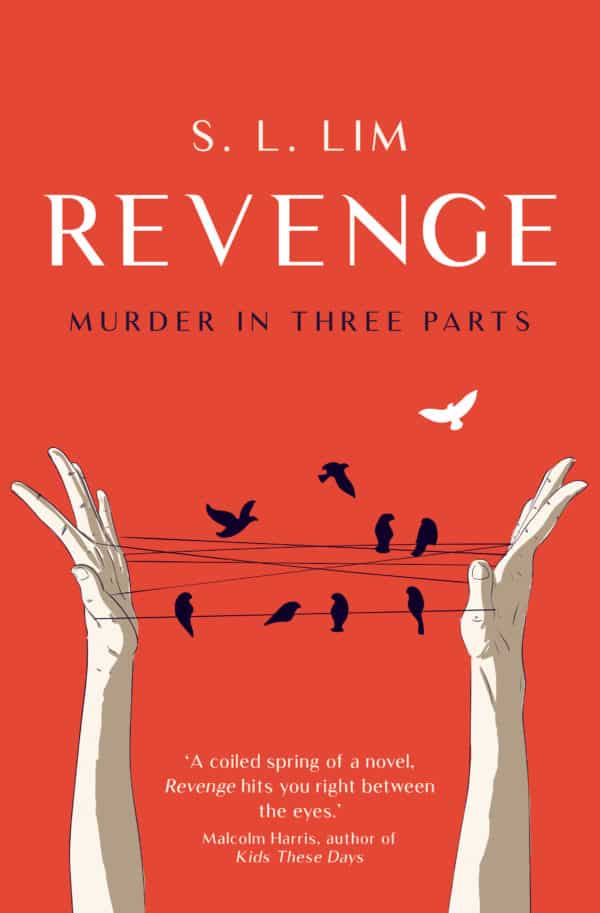
REVENGE: MURDER IN THREE PARTS
‘Before I go into my grave,’ she says out loud, ‘I will kill that man.’
A brilliant new novel from the author of Real Differences. A family favour their son over their daughter. Shan attends university before making his fortune in Australia while Yannie must find menial employment and care for her ageing parents. After her mother’s death, Yannie travels to Sydney to become enmeshed in her psychopathic brother’s new life, which she seeks to undermine from within …
This is a novel that rages against capitalism, hetero-supremacy, mothers, fathers, families – the whole damn thing. It’s about what happens when you want to make art but are born in the wrong time and place.
S. L. Lim brings to vivid life the frustrations of a talented daughter and vengeful sister in a nuanced and riveting novel that ends in the most unexpected way. It will not be easily forgotten.
TYPICAL NARCISSISTIC BEHAVIOURS
Since narcissists are hell bent on exerting control and influence over others, they utilise the toolkit of any coercively controlling person:
GASLIGHTING

Gaslighting is a set of tactics to make someone doubt their own mind, and instead rely on their abuser’s by evoking guilt and shame and creating cognitive dissonance.
- blame shifting
- projecting
- denying
- belittling
- lying
- triangulating
- turning people against you
Gaslighting is about more than denying a victim’s external sense of reality e.g. convincing someone the room is light when it’s really dark. Gaslighting is more often about denying someone’s emotional reality, eroding someone’s sense of self and sense of their own mind. “You say you’re angry? No, you have no reason to be angry with me. You’re crazy.”
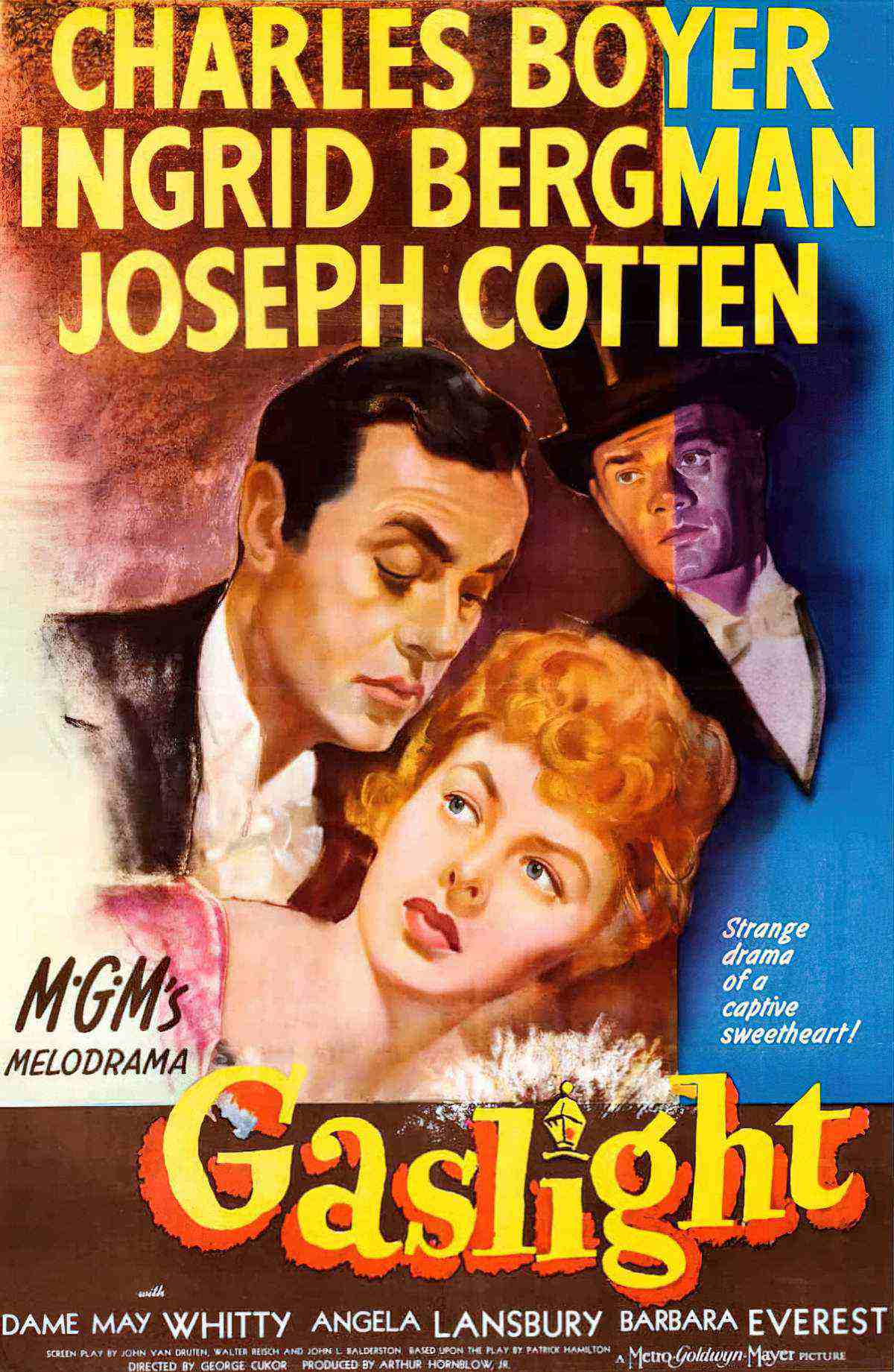
Gaslighting affects a victim’s entire sense of self, including their own abilities and self-worth.
Philosophy, at its worst, can be a beacon and haven for gaslighters. I draw here on a brilliant insight of the philosopher Kate Abramson’s: the gaslighter is somebody to whom disagreement is anathema, at least vis-a-vis certain subject matters, and with respect to certain people. He is then incapable of abiding the possibility of being challenged. And, what’s more, he wants to dominate his target and perpetually win the argument, or else make her afraid to disagree with him. He doesn’t just avoid arguments by withdrawing, say, or—as Abramson points out—by doing something drastic like disabling or killing his victims. (This even though the paradigm examples of gaslighters also happen to be murderers.) He wants to keep her around as an interlocutor. And he wants to colonize her mentally, or at least to control her utterances. He wants to win, win, win; so he needs to have at least the specter of an argument with her in the offing. He wants to preserve a subject to subjugate, to control, to dominate.
from feminist philosopher’s Kate Manne’s newsletter “More to Hate” (which I highly recommend). This issue is titled “Men demand I agree with them”. If you’re wondering whether this ‘counts’ as gaslighting, because the word is being eroded due to overuse, Kate Manne also linked to her essay on Moral Gaslighting.
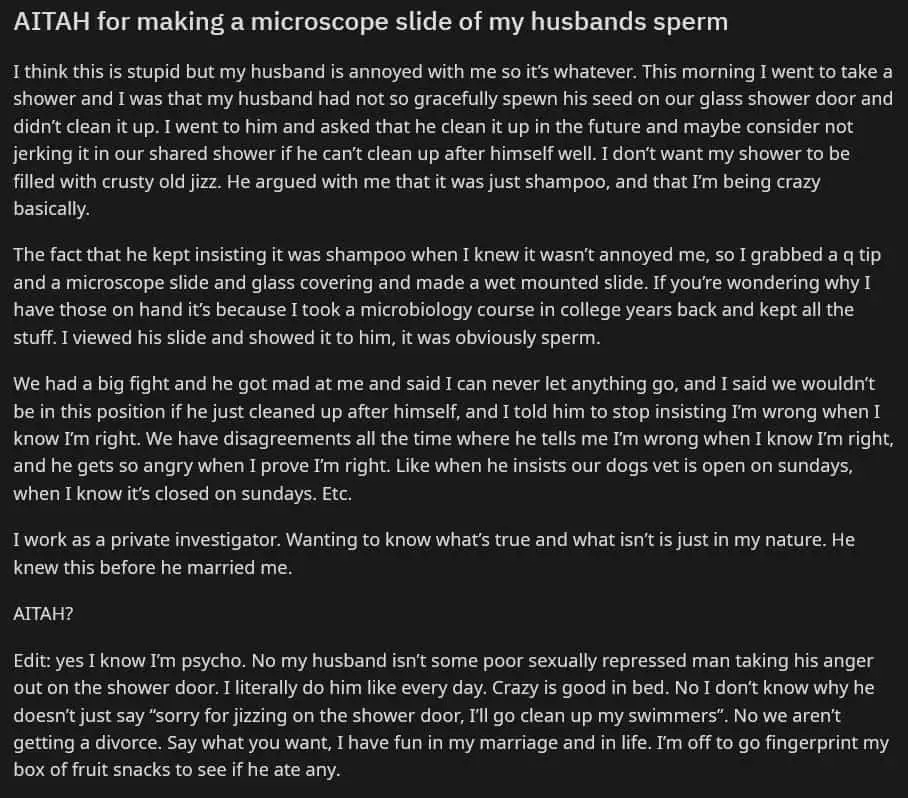
LOVE BOMBING
Another manipulation tool is love bombing, which has nothing to do with love, despite the name.
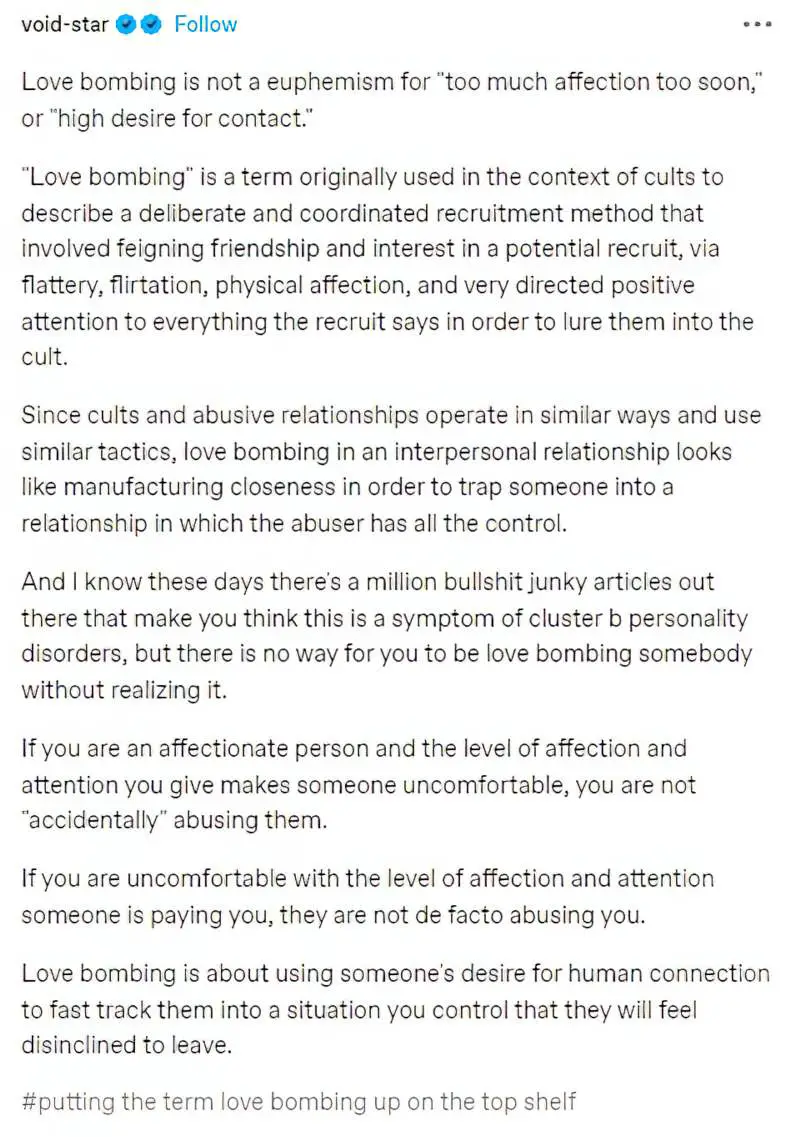
DARVO
This stands for: deny, attack, reverse victim/offender, and is a common tactic of perpetrators who have been accused of abuse or wrongdoing.
SOCIAL ISOLATION
Cutting someone off from friends and family is an excellent way to have full control over them, to use them as your own personal puppet.
VIOLENCE
This may be actual violence or the persistent threat of violence.
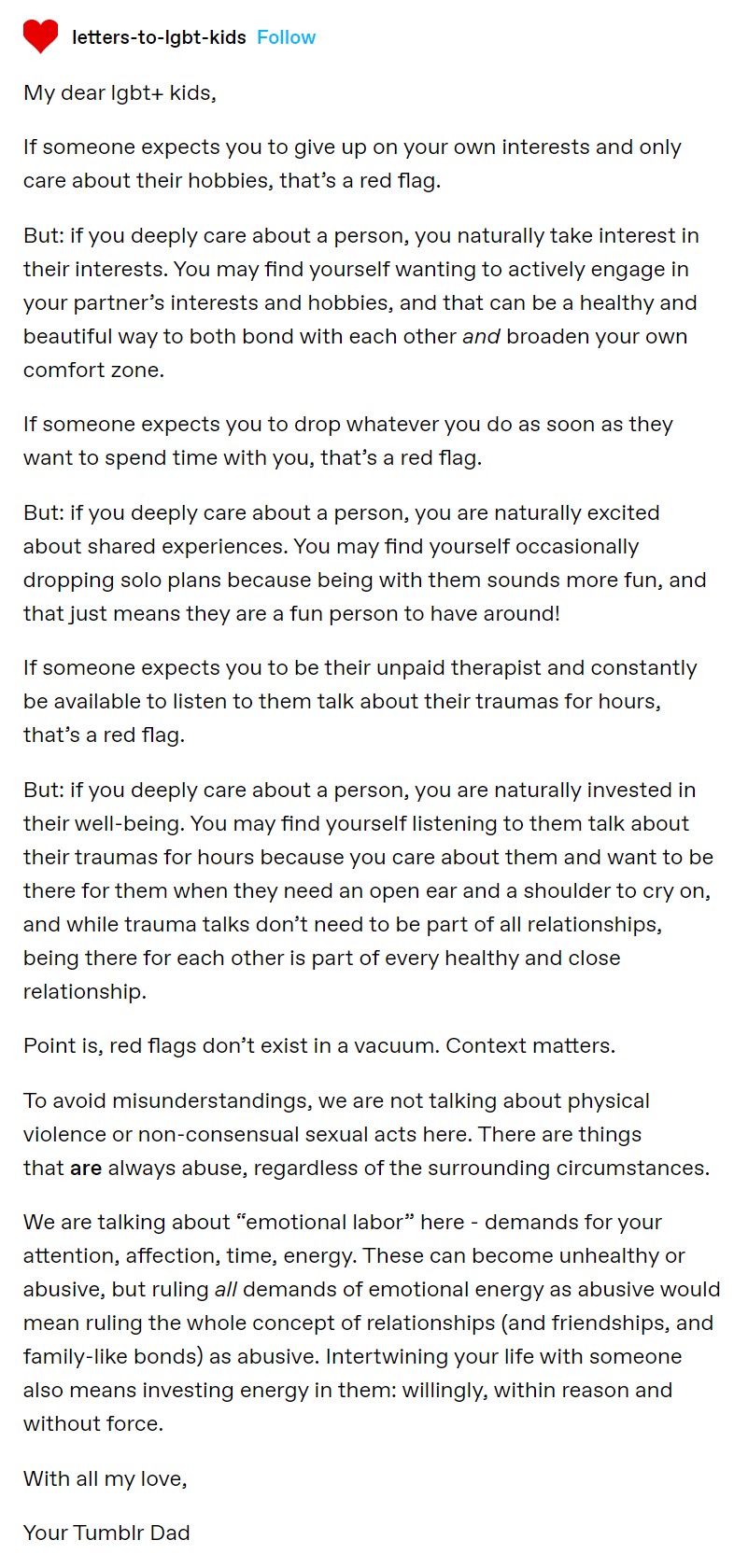
HOW TO DEAL WITH A NARCISSIST
If you’re stuck in the orbit of a narcissist, grey-rock them. Imagine you’re a flat, uninteresting grey stone on a grey, rocky beach. Be as boring as possible to them. Do everything you can to avoid attracting their interest. Keep personal information to yourself. The more information they gather about you, the better they can control you. They’re especially interested in your emotions. What makes you tick? What upsets you?
Set boundaries
This takes courage. It’s not easy to speak up, especially if there are decades of relationship behind you e.g. the narcissist is a parent. (Not uncommonly, both parents are narcissists, unfortunately. Like attracts like.)
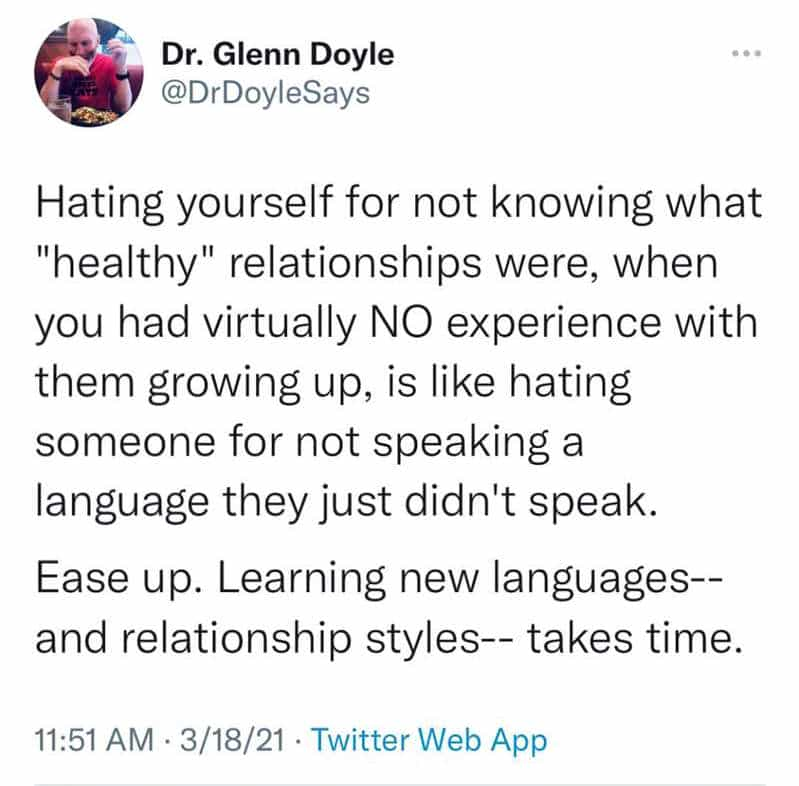
In short, keep communication at a minimum. Decide what you can do. Phone conversations okay but not constant txt contact? Meeting several times per year but not on important occasions such as Christmas and birthdays?
- Boundaries are informed by both preferences and capacity.
- You can want to want something but be unable to offer it.
- Capitalism does not respect our boundaries and trains us to exceed them.
Do not
- Explain yourself
- Defend yourself
- Give in
- Apologise
All of these interactions provide narcissistic supply, which rewards their narcissistic behaviour and leads them to believe their remote control buttons for you are working.
Coming out of a relationship with a narcissist means you have to build your sense of self from the ground up. You may have been told to ignore every bodily sensation e.g. the sensation of hunger. Even babies are born with a sense of hunger, so in some ways, disentangling from an abusive narcissistic relationship means you’re starting at a level lower than a newborn.
You may wonder, going into your next relationship, if you’ve been permanently damaged by the narcissist. You may feel you’ve lost your empathy. That’s not what’s happened. An empathetic person remains empathetic. Instead, you’re more discerning. And cautious. And that’s okay. Trauma is damaging, but it’s also a skill-set.
It’s expected that someone traumatised by a narcissist will bring a certain overcorrection into subsequent relationships. You may find your next partner tells you, “But I’m not that person!”
Look instead for a partner who is willing to go slowly, to wait for you to go at your own pace. Partners, family members and friends make for healthy relationships when they behave as trustworthy custodians of your vulnerability.

Sergeant Catherine Cawood advises her grandson Ryan in Season 3 of Happy Valley when Ryan complains about a malignantly narcissistic games teacher at school who has kicked him off the team:
CATHERINE: Do you want to get back on the team?
RYAN: Yeah. Be better if he weren’t such a dickhead, though.
CATHERINE: Well, dickheads are a fact of life. Anywhere you look, there’ll be a dickhead. Better get used to it. Night-night.
RYAN: Night-night. Love you.
CATHERINE: The trick is to negotiate your way around ’em without ’em even realising you think they are a dickhead.
RYAN: Yeah. And then revenge is a dish best served cold.
Happy Valley, Season 3, Episode 2
Learn how gaslighting works and track everything as best you can. (See above)
For a narcissist, everything is a means to an end. And the end is always control. You may think you’re having a discussion about one thing, but the narcissist will be focused on controlling you. What shall we have for dinner? The narcissist doesn’t care about the dinner. They will use your caring about the dinner as a way to control you. They would eat cold baked beans if it meant they could later blame you for it and make you feel guilty.
If you meet someone who seems psychotic or delusional, that person may in fact be the victim of a malignant narcissist, not the narcissist themselves. It’s important to understand the typical panicked and “crazy” presentation of people who find themselves in abusive relationships. They won’t know what’s real and what’s not real anymore. They may even tell you themselves that they are narcissistic. (The real narcissism has told them they are.)
Unfortunately, hyper-empathic people tend to find themselves in relationships with narcissists. So it’s likely the victim is very high in affective (warm) empathy. They showed a lot of themselves to the narcissist in the early stages of the relationship, which was particularly attractive to the narcissist. The more the victim feels, the easier they are to control.
If you are someone who finds yourself going from one narcissist to the next, you likely have the following schemata:
- self-sacrifice
- subjugation
- abandonment (in common with narcissists)
- dependence (in common with narcissists)
To avoid the attention of narcissists, we need a healthy level of affective empathy which takes our own needs into account. For that we need to know what our own needs are. People who come from a background of abuse have learned to subjugate their own needs and may have trouble identifying them. Hyper-empathic people have an easily exploitable weakness wherein they can be very easily persuaded that they are the cause of the abuser’s bad feelings.
In fiction, this kind of relationship may be presented using a variety of metaphors. The Dance Macabre is one way of depicting it: The abusive relationship is a system which is maintained by two people. In Black Swan, the abusive relationship is between mother and daughter:
Darren Aronofsky’s film Black Swan is many things, one of them a brilliant depiction of a mother-daughter relationship that represents the destructive domination of a sensitive child by her mother; and the destruction of the daughter through madness and possible suicide as she attempts to escape. (Aronofsky appears to leave it to the viewer to decide whether Nina actually dies at the end of the film, or has merely plunged deeper into insanity).
A Psychiatrist Goes To The Movies
Though marketed as comedy, I’m Glad My Mom Died by Jennette McCurdy (2022) is a harrowing depiction of a narcissistic mother at the extreme end of the scale.
NARCISSISTIC PARENTS

Jennette McCurdy was six when she had her first acting audition. Her mother’s dream was for her only daughter to become a star, and Jennette would do anything to make her mother happy. So she went along with what Mom called “calorie restriction,” eating little and weighing herself five times a day. She endured extensive at-home makeovers while Mom chided, “Your eyelashes are invisible, okay? You think Dakota Fanning doesn’t tint hers?” She was even showered by Mom until age sixteen while sharing her diaries, email, and all her income.
In I’m Glad My Mom Died, Jennette recounts all this in unflinching detail–just as she chronicles what happens when the dream finally comes true. Cast in a new Nickelodeon series called iCarly, she is thrust into fame. Though Mom is ecstatic, emailing fan club moderators and getting on a first-name basis with the paparazzi (“Hi Gale!”), Jennette is riddled with anxiety, shame, and self-loathing, which manifest into eating disorders, addiction, and a series of unhealthy relationships.
These issues only get worse when, soon after taking the lead in the iCarly spinoff Sam & Cat alongside Ariana Grande, her mother dies of cancer. Finally, after discovering therapy and quitting acting, Jennette embarks on recovery and decides for the first time in her life what she really wants.
- It’s common for people with narcissistic parents to find it difficult to silence of the parent’s critical voice inside their head.
- Narcissistic parents use their children to bolster their own sense of worth, so children never learn to understand their own needs, solely focused on the needs of their parent. “Upside Down Families”. Children parent the parents.
- Typically children of narcissistic parents are required to achieve, be in sport, acting, academia. Children know that if they don’t achieve, they will be rejected by the parent for failing to provide the addict their supply of self-worth.
- If the child doesn’t perform ‘adequately’, the parent may become angry, sad or they withdraw. Children can’t learn emotions from parents who themselves don’t understand emotions. So children of narcissistic parenting have difficulty acquiring interoceptive skills, identifying what they are feeling. They may internalise it, or be explosively angry, then deny they’re even angry. It’s obvious to outsiders, but not to themselves.
- Some narcissistic parents aren’t needy all of the time, just some of the time. While this provides children some relief, this is problematic in its own way because the child never knows what is expected of them at any given moment.
- Your parent might take advantage of others because they are entitled.
- They can’t tolerate criticism because of extreme sensitivity. But they are very critical of others, including their own children. They drive their children apart, comparing them to each other, dividing them up by their perceived ‘main attribute’: The pretty one, the smart one, the athletic one… Many parents do this but with a narcissistic parent it’s extreme. There may be a ‘good child’ and a ‘bad child’. The bad child can never do anything right and is ostracised by the whole family.
- They might exaggerate their own importance. They suck the entire family’s energy towards themselves.
- They need significant attention and admiration, whether grandiose or fragile.
- Because narcissists don’t understand their own emotions, they are unable to understand their children’s emotions. There’s no affective empathy between parent and child. However, the parent may try to validate their child and say the right things. “I love you, I’m proud of you, I see you’re angry” etc. but the child doesn’t feel the warmth. This, too, is extremely confusing and destabilising for a child who doesn’t feel validated. This leads children to doubt themselves.
- A narcissistic parent (or two) affects all of the family dynamics. It is common for the other (non-narcissistic) parent to go completely silent and fail to step in where the narcissistic parent fails. It is also common for narcissistic parenting to fracture relationships between siblings, since they have all learned that the only important relationship in the family is the narcissistic parent.
- Though it can go the other way, in which children bond closely.
- Very often, adult children feel a lot of shame in themselves, and shame regarding their relationship with their parent. They notice other people have issues with their parents, but not like this.
- Adult children frequently have difficulty finding what they want to do or be in life. They have been brought up to sublimate their own desires.
- Repetitive negative thinking is another big problem for adult children.
- They take on too much, have difficulty setting boundaries (saying no), and grief for a childhood they never had and never will have.
- It’s difficult to let go of the hope that the relationship with their parent will be different one day. (It won’t.)
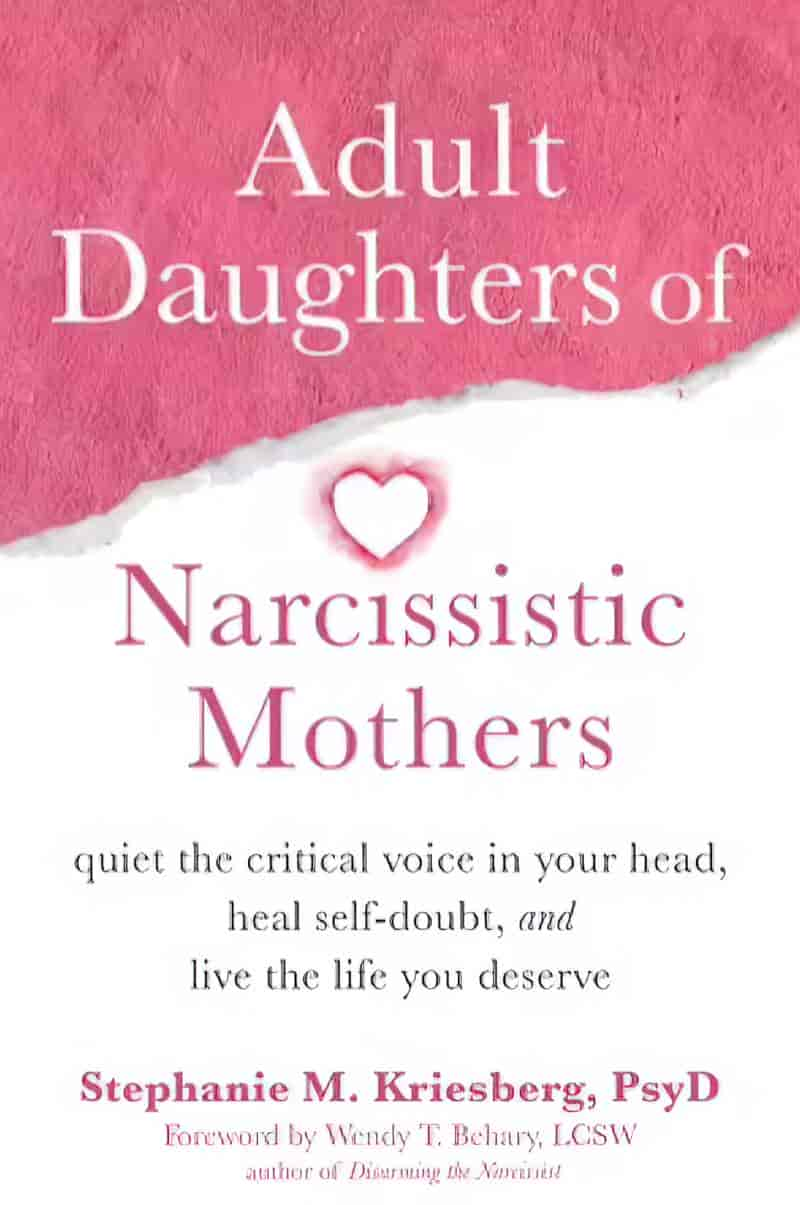
Did you grow up with a mother who was controlling or manipulative? Was she emotionally or psychologically abusive toward you? Did she make you feel ashamed, rejected, or “crazy?” Was it all about her, all of the time? When your mother is a narcissist, it can damage and invalidate your sense of self, and leave you with lasting anxiety, insecurity, self-doubt, and a relentlessly critical internal voice. But there are tools you can use to move forward in your adult life with confidence. The evidence-based skills in this book will help you heal the scars of growing up with a self-absorbed and narcissistic mother.
Written by a psychologist and expert in narcissism, Adult Daughters of Narcissistic Mothers offers proven-effective strategies drawn from cognitive behavioral therapy (CBT), dialectical behavior therapy (DBT), and acceptance and commitment therapy (ACT) to help you reduce anxiety, build confidence, overcome self-criticism, and live the life you deserve. You’ll also find tons of practical tips to help you build healthy, trusting relationships; stop apologizing for the failures of others; and start trusting your own good judgment.


EMOTIONALLY IMMATURE PEOPLE
If you just read all that and are now more confused than before because you thought someone in your life was a narcissist but now you’re wondering if they’re terrible enough to count, you may be dealing with an emotionally immature person (EIP). All narcissists are emotionally immature, but not all emotionally immature people are narcissists.
No one has done a count up of how many people are emotionally immature (it’s a spectrum anyway), but it’s probably more than we think. If you are close to someone who is charming and popular and friendly in public, then comes home and shows you a really nasty, immature side, it’s likely you’re dealing with an EIP.
For more on that from an expert, see the 10 Per Cent Happier episode “How To Deal With Emotionally Immature People”.
Why do some adults remain emotionally immature? It’s frequently to do with how they were parented, some trauma from early life, or perhaps trauma from their parents’ life which trickled down. Emotionally Immature People are not morally bad; they are still very difficult to deal with except from a slight distance.
PSYCHOPATHY
Psychopath is not a diagnosis. No one goes to the psychologist’s office and comes back with a diagnosis of ‘psychopath’. Psychopathy is a research term used by research psychologists. It overlaps with what diagnosing psychologists might diagnose as antisocial personality disorder (ASPD).
An expert speaking in a 2015 documentary about psychopaths (Psychopath: Redefining Rational) estimates that although psychopaths comprise a tiny proportion of society, they are responsible for about half of all violent crime.
Psychopaths probably make up around 20 per cent of the prison population in both the USA and Britain. They are four times more likely to re-offend than other released prisoners, yet they are just as likely to get parole. Little is known about the minds of psychopaths and what is behind the horrific things they do. Professor Robert Hare suggests looking at the brain for clues to their behavior.
description of the documentary at Amazon Video

NIGHTCRAWLER (2014)
When Louis Bloom, a con man desperate for work, muscles into the world of L.A. crime journalism, he blurs the line between observer and participant to become the star of his own story.
IMDb
Louis Bloom is a realistic psychopath:
- lacking in empathy
- manipulates others for personal gain
- using superficial charm
PSYCHOPATHS IN THE WORKPLACE
HONEST AND COSTLESS SIGNALS
If a frog has a marking which shows it is poisonous and the frog is, indeed, poisonous, this is known as an ‘honest signal’.
But if a frog had the marking but was not itself poisonous, this would be a ‘dishonest’ signal.
Signals can be cost or costless. It costs a non-poisonous frog nothing to look poisonous.
The plume of a peacock is honest in that it does signal mating desirability but it comes at a huge evolutionary cost to the individual peacock, who is encumbered by its massive tail when trying to escape predators.
Can we apply the same basic concepts around animal signalling to human culture? If someone wears expensive sunglasses, that means they somehow found the resources to acquire them. An honest signal. But what if they’re knock-off sunglasses? Does this become a dishonest signal?
Most of the time when we assess people we don’t have signalling information. We’re required to make judgements based on very little. Humans are able to send dishonest signals very successfully. Psychopaths are very good at sending signals which make them appear trustworthy. The psychopaths we know about are the unsuccessful psychopaths.
The successful psychopaths find themselves in power. Psychopaths are generally drawn to power. Superficial charm and manipulation are characteristics which make someone very well-suited to achieving power over others.
Job interviews are perfect for psychopaths. Psychopaths are only required to send dishonest signals for an hour, tops. This is very easy for them. We need to be smarter about how we assess people. Recruitment without accountability will lead to psychopaths in power.
Why Are Bad People Good at Getting Power? | Dr. Brian Klaas talking about his book Corruptible (Sunday 21 November 2021)
CAN ANYONE BECOME A PSYCHOPATH?
Psychopathy is a neurodivergence but it is becoming more and more clear: environment has an impact.
A study on internet trolling among Australian teenagers has found young men and those who have been trolled themselves are more likely to engage in the behaviour.
Young men, trolling victims more likely to become trolls themselves, study finds
By ‘troll’, the Australian researchers mean ‘deliberately upsetting others online’. Participating trolls revealed that they get enjoyment out of angering and embarrassing others, and tricking people out of things. More than adults, young people seek reactions from strangers.
Is Pippi Longstocking a psychopath?
Before you dismiss the idea out of hand, a little bit of psychopathy can be a beneficial thing for the individual. An evolutionary advantage, in fact.
Episode 59 of the We Hate Movies podcast tears strips off The New Adventures of Pippi Longstocking. I have not seen this film, but I have it on very good authority that the book is far better than the atrocity which is the screen adaptation, despite all of the problems associated with the book.
One of the We Hate Movies guys points out that Pippi is likely an example of a psychopath, which sounds like a complete exaggeration, unless you understand that psychopathy is not a binary condition; rather, we are all somewhere on a continuum.
Apparently Hayao Miyazaki considered turning Pippi Longstocking into a movie and some concept art was even created, but he eventually decided to flag it. I wonder if Miyazaki thought Pippi Longstocking was too much of a psycho? After all, he prefers nice, well-rounded protagonists.
Who is from classic children’s literature might be a psychopath? What about Mary Lennox from The Secret Garden, unloved until the age of ten? Then again, maybe it wasn’t too late for Mary, who was reformed about being sent to the country:
Four good things had happened to her, in fact, since she came to Misselthwaite Manor. She had felt as if she had understood a robin and that he had understood her; she had run in the wind until her blood had grown warm; she had been healthily hungry for the first time in her life; and she had found out what it was to be sorry for some one.
The Secret Garden
Stieg Larsson, he who wrote The Girl With The Dragon Tattoo series, said that Lisbeth Salander was inspired by Pippi Longstocking:
This delightful and formidable little girl has been a champion of equality between the sexes: she doesn’t depend on anyone, can use a revolver, has sailed the seven seas … But the main thing about Pippi is that she has her own ideas about right and wrong—and she lives by them, no matter what the law or adults say.
Kevin Dutton wrote a book called The Wisdom Of Psychopaths. He is very interesting in interview. You can listen to him speak about psychopaths, and how his own father was a psychopath at the Science Talk podcast.
FURTHER INFORMATION ON PSYCHOPATHS
It turns out psychopathy is fascinating. We’re attracted to such characters, perhaps trying to understand them, maybe because in small tribes such people would be useful and dangerous in equal measure.
- 60 Second Mind: Inside The Mind Of A Psychopath and Dexter Talks Psychopath Stress Management. The 60 Second Mind podcasts offer just enough information to make you want to know more.
- Then there’s The Bad Seed episode from Stuff To Blow Your Mind, one of my favourite podcasts from How Stuff Works.
- Which US President Was The Biggest Psychopath? from PSY Blog
- Can You Call a 9-Year-Old a Psychopath? from NYT Magazine
- I Have The Brain Of A Serial Killer comes from someone who has been studying brains and childhood experiences, trying to work out why some people turn out to go on shooting sprees. As someone who has had chapped lips all my life, I wonder if I, too, have the brain of a serial killer. Let’s hope there’s much more to it than that…
- The Two Steps To Spotting A Psychopath from PSY Blog
- What makes a psychopath’s brain different? from io9
- The neuroscientist who discovered he was a psychopath from Salon
- What’s a s*dist? Psychopaths vs. S*dists from Time
- Machiavellianism, and the ‘dark triad’ of personality from All In The Mind podcast
- Psychopathy’s Bright Side: Kevin Dutton on the Benefits of Being a Bit Psychopathic, Part 1 from Mind Science Talk
- Psychopathic traits – “everybody has them” from Our Changing World, 9:06 pm on 6 February 2020
Overall, trust your own instincts.


Monsters and Monarchs: Serial Killers in Classical Myth and History
Even if the term “Serial Killer” wasn’t coined until the end of the 20th century, the practice of multiple murder has followed humanity through the ages. In Monsters and Monarchs: Serial Killers in Classical Myth and History (U Texas Press, 2021), professor Debbie Felton digs deep into the sources to demonstrate instances of what we might recognize as serial killers in antiquity, from myth to Imperial Rome to rhetorical exercises and maybe even on our small screens at home. Tracing these gruesome lineages, she exposes examples of these “types” of criminals through history, including more recognizable names like Jack the Ripper and Jeffrey Dahmer. What is mirrored are the characteristics we recognize as multiple homicidal psychopathy within ancient history and myth. This book is a complex and fascinating interweave of classical myth, ancient history, and true crime as manifesting in both our modern imaginations and those of generations past.
New Books Network
SOCIOPATHY
Everyone is replaceable. … I don’t need these specific people. They give me laughs, hugs, and sex. I can get laughs, hugs and sex from someone else too.
Sidenote: there’s something very comforting about hugging cute girls. Maybe that’s the narcissistic side of me, seeking the ideal relationship.
r/sociopath

WHAT’S THE DIFFERENCE BETWEEN A PSYCHOPATH AND A SOCIOPATH?
There’s no widely agreed upon difference between these two groups. I’ve heard various psychologists talk about this distinction and they all say something a little different.
Some say sociopathy is a pop-culture word whereas psychopathy is the clinical word.
Some say there’s no difference, that sociopathy is the same thing as psychopathy.
Some say that psychopathy is ‘next level sociopathy’ (sociopathy but with even less affective empathy).
For one answer to this question, I refer to Laura Richards’ Crime Analyst podcast, specifically the episode analysing the crime documentary series Puppet Master: “My Two Cents: Episode 60, 7 Takeaways from the Puppet Master”.
First, Richards explains how behaviours of abuse tend to be idiosyncratic and specific to each victim. Isolation is the common thread: The perpetrator separates the victim from family and friends in order to monopolize them. They then micro-regulate and manage their victim, persuading them that isolation from everyone else is in their own best interest. (Unfortunately, for all the good Richards does for victims of gendered violence, she has a blind spot when it comes to accepting trans women as women.)

Now let’s take a look at what Dr Ramani says about the difference between sociopathy and psychopathy. Dr Ramani is a narcissism expert and draws a distinction between psychopathy and narcissism. Notice how every expert has their own ideas about distinctions between personality disorders, which is what makes it so confusing for the rest of us:
Psychopathy and sociopathy. Neither of them are straight-up clinical terms. The diagnostic term for psychopathy is something we call antisocial personality disorder. It’s a terribly named disorder but it captures clinically and diagnostically this personality model called psychopathy.
With psychopathy you have a lot of the things you’d see in narcissism, like lack of empathy, entitlement, grandiosity. But there’s a chronic coldness, aloofness, callousness, exploitativeness, manipulativeness. A psychopath has no capacity for intimacy, empathy, or depth of human relationship. None whatsoever. They have no remorse for their bad behaviour. That’s different from narcissism. Narcissistic people actually do feel remorse. They know how to work systems. They stay very cool, actually, at times when you’d think other people would be quite explosive. They can be typically, but not always, cool, calm and collected because they don’t experience anxiety. It’s believed the autonomic system activation in a psychopath is dialled down. In some ways they are your person if you need someone who’s gonna stay totally cool, like in a situation of combat, or a really difficult business decision, or even a patient bleeding over an operating table. They will actually stay quite cool.
That protection against anxiety, as it were, usually doesn’t do them any favours. It certainly doesn’t do other people any favours. That’s why you see psychopaths in CEO positions and leadership positions, because they’re able to destroy anyone they need to get to the top and seem very cool and put together. They tend to be quite parasitic in their lifestyle. So we see aliases, we see deceit, lies, and an unbelievable capacity to lie to someone’s face. Whereas the rest of us, if there was a lie detector on us it would look like a person having a heart attack on an EKG, they stay pretty calm. A lie detector type test is actually not useful with a psychopathic person. … They’re motivated only by power, pleasure and profit and people will serve one or all of these functions to them, but that’s it.
Now, sociopathy is not a clinical term at all. This term comes more from the sociological and criminology [areas] of literature. It reflects a style, more so than psychopathy. It’s not as well articulated as the theory, it doesn’t hang together as much. A psychopathic person almost doesn’t understand rules and regulations if they don’t work for them. They may be surprised and say, “There’s a rule against that? Well that doesn’t make sense.” For a sociopathic person, they know there’s a rule and they break it. They understand the rule, but for reasons such as entitlement they don’t believe the rule should apply to them.
Sociopaths also tend to be a bit more reactive. They tend to more dysregulated. They tend to be messy. [..]
Psychopathy and sociopathy both, there’s a strong focus on vindictiveness. They’re almost paranoid in the sense of, “Everyone’s out to get me. I’ve got a target on my back. They’d have other people almost taste there food or something like that. There’s a low grade paranoia
Whereas a psychopath will notice, say, somebody’s looking at me. And then they will create a plan to get revenge on that person. A sociopath will punch them in the face, right in that moment.
That’s the difference. Sociopathy is messy, more combative. Psychopathy is a planfulness, almost a premediated nature to their rage.
Survivor Squad: Terra Newell’s Story w/ Collier Landry – Part 1, November 2022 (in which Dr Ramani considers Dirty John more of a sociopath than a psychopath).
Once the victim has no one else, they are 100% dependent on the perpetrator for everything. Complete dependency is what the perpetrator wants. Most victims don’t see the control and abuse as it’s happening. It’s a form of hostage-taking. The perpetrator takes control of your mind and the victim becomes a passenger in their own life.
When abusers are called ‘con men’, they sound more harmless than they actually are. Some are psychopaths (e.g. “Dirty” John Meehan), others are sociopaths.
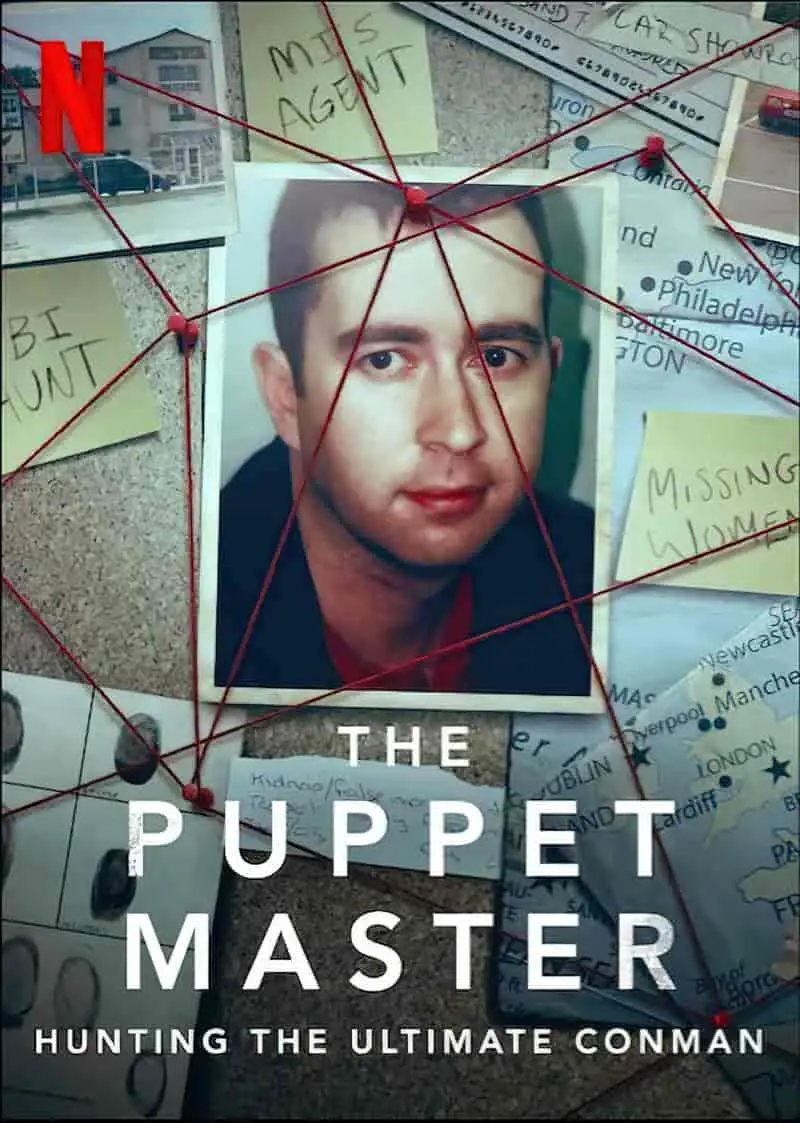
At almost 13 minutes in, Laura Richards outlines how she broadstrokes a delineation between psychopaths and sociopaths. What unites the two is lack of affective empathy and remorse.
- Psychopaths: Incapable of empathising. They believe what they’re doing the right thing and have no remorse at all. Everything is all about them. Dominate or be dominated.
- Sociopaths: Know what they’re doing is wrong. (This speaks to their higher level of empathy.)

SADlSM
ROSE AND FRED WEST
The tentpole example of sadistic crimes were committed by Rose and Fred West. See, for instance, the documentary Crimes That Shook Britain, Rose and Fred West.
In interview, a detective who was involved in the case draws a clear distinction between the Wests and most other sex crime he has seen across his career. Sex crime is very often perpetrated by people with power and control issues but the Wests are in a different category. Their crimes were sadlstic because of the level of pleasure the perpetrators derived specifically from the misery of their victims.
EVERYDAY SADISM
Ever taken pleasure in another’s pain? That’s everyday sadlsm.
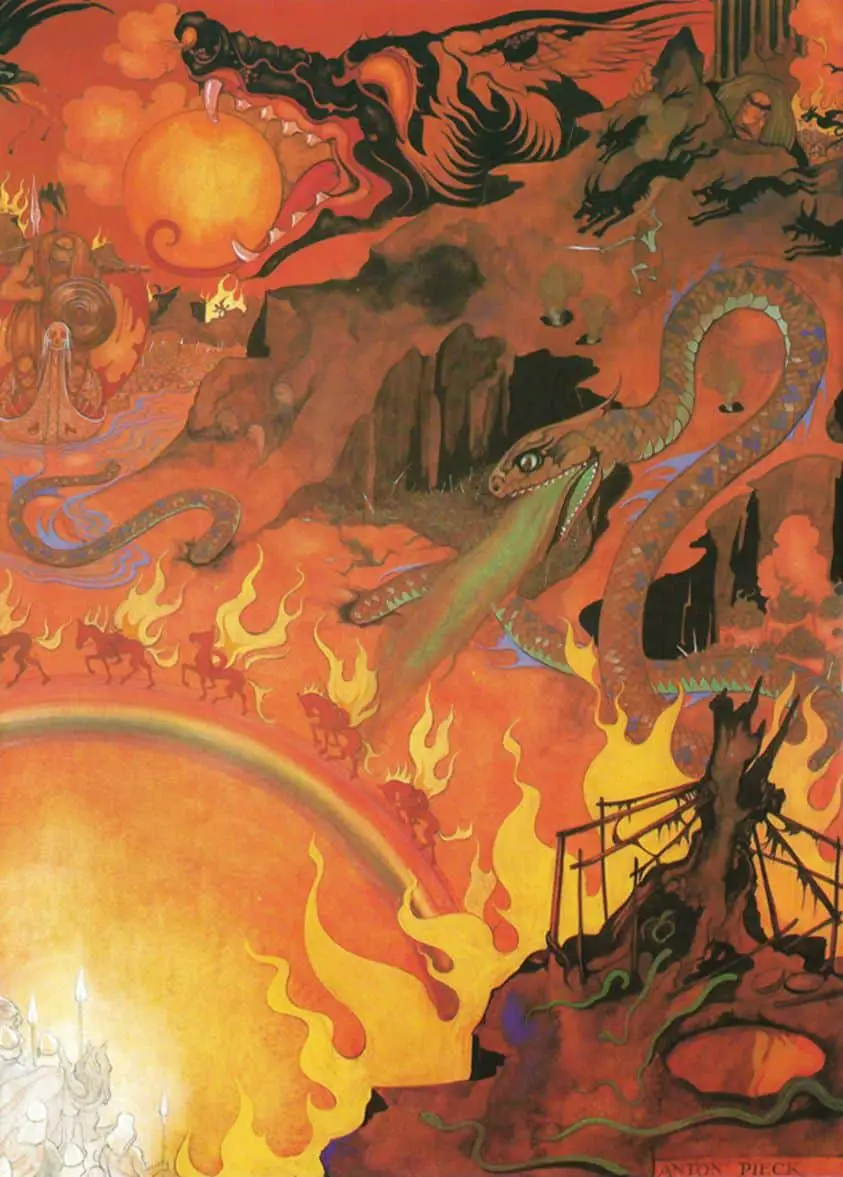
SADISTS AND URBAN LEGENDS
- The 1970s saw a change to the American tradition of trick or treating at Hallowe’en. Suddenly parents were cautioned against letting their children take food from strangers.
- In 1970 The NYT cautioned against ‘a kindly old woman down the block [who] may have a razor blade hidden inside’.
- These stories continued to run regularly. ‘In recent years, several children have died and hundreds have narrowly escaped injury from razor blades, sewing needles and shards of glass purposefully put into their goodies by adults.’ (Newsweek, 1975). There is no evidence that ‘several’ children died from Halloween sadlsm. Two children did die at Halloween after ingesting something toxic. One five-year-old, Kevin Toston, was thought to have ingested candy laced with heroin. In fact he found heroin in his uncle’s home, unconnected to candy, unconnected to trick-or-treating. The other death was eight-year-old Timothy O’Bryan in 1974. Timothy did die after eating Halloween candy laced with cyanide. But his own father had contaminated the treat. This was a tragic example of domestic violence. (Domestic violence perpetrated by male partners, fathers and step-fathers is something the press should pay more attention to.)
- ‘Somebody’s child will become violently ill or die after eating poisoned candy or an apple containing a razor blade. (Van Buren, 1983)
- In school, children were taught to look for signs their Halloween goodies had been tampered with.
- Fear of taking candy from strangers goes back much further than the 1970s.
- And fear of Halloween in particular goes back at least as far as the 1940s. In an early narrative about Halloween sadlsm, Texas gave rise to a story about someone giving children scorching pennies heated on a skillet.
- The one season TV show Freaks and Geeks aired in 1999 but is set in 1980 when the creator was coming of age. In the “Tricks and Treats” episode, the entire Weir family has a terrible Halloween. Jean (the mother) gets excited, dresses up, decorates the house and bakes cookies to hand out. She is shocked and hurt to learn that all the children have been cautioned against accepting homemade treats. They’re only allowed to accept packaged processed food now. The backdrop of this storyline: Sensationalist storylines about Hallowe’en sadlsts, which had been published since at least 1970 in mainstream, influential publications.
- Some states took this new perceived threat so seriously they passed legislation against Halloween sadlsm. And by 1984, it was taken for granted that these people were out there, just waiting for innocent children to stop by and become their next victim.
- The attackers were regularly described as disturbed or insane. Regular people couldn’t fathom a reason for inflicting harm on small children out to have fun. But the ‘reason’ was thought to be a deprived childhood in which they, themselves, were never allowed to have fun. Ergo, no one else is allowed to have childhood fun, either. (See also all those myths and stories featuring ‘barren’ women who kill the babies of other women.)
- In fact, Halloween sadlsm is extremely rare, and always has been. No official statistics are kept on it. These stories are urban legend, and we can best understand it by turning to folklore studies.
- Halloween has a long history of tragic accidents. This is a night when large numbers of children venture out at night. Young trick or treaters have long been warned about various dangers. (Flammable costumes, masks which impede vision when crossing the road etc.) From 1972, parents were also warned to check their children’s treats for tampering.
- Between 1972 and 1982, reports of Halloween sadlsm fell, but 1982 saw a marked uptick.
- The renewed fear of 1982 can be attributed to the infamous Tylenol murders. This is before tamper proof seals on over-the-counter medications, and someone had replaced some in-store Extra-Strength Tylenols with arsenic, which killed the victims immediately. (There is a recent podcast detailing this case. It’s called Unsealed: The Tylenol Murders.)
- This case was thought to provoke ‘copy-cat’ crime.
- Because of the Tylenol Murders, the press published a lot more of the incidents of food and drug tampering. However, this increased reporting only lasted one year. After that, reporting fell back down to previous levels. The effect of the increased press coverage: Increased anxiety over this kind of sadlsm, warranted or not.
- Stories of Halloween sadlsm have now become part of Halloween itself. Halloween and trickery go together. The idea that a bad person might be lurking inside that rundown house at the end of the lane is a fun story to enjoy with friends at Halloween. These stories about Halloween sadlsts resemble stories children tell about ghosts and witches.
- These days, the press is not the main vector for fear about Halloween sadlsm. This fear spreads through word of mouth.
(Notes above from: THE RAZOR BLADE IN THE APPLE: THE SOCIAL CONSTRUCTION OF URBAN LEGENDS BY JOEL BEST AND GERALD T. HORIUCHI, CALIFORNIA STATE UNIVERSITY)

THE STONE SCALE OF EVIL
The Stone Scale of Evil was created by Dr Michael Stone, an American psychiatrist and Professor of Clinical Psychiatry. Stone proposed this scale for thinking about real life murderers, but we might use it to consider the motivations of fictional characters.
Do you agree with my examples below?
| Category | Criteria | Fictional Killer |
|---|---|---|
| 01 | Those who kill in self-defense and do not show psychopathic tendencies | Jessie Pinkman (Breaking Bad); Bunchy Donovan (Ray Donovan); Llewellyn Moss (No Country For Old Men); Rae Ingram (Dead Calm); Louise (Thelma & Louise) |
| 02 | Jealous lovers who, though egocentric or immature, are not psychopathic | Archie Noury (“A Country Killing” by Annie Proulx) |
| 03 | Willing companions of killers: aberrant personality, probably impulse-ridden, with antisocial traits | Lewis Whippey (Happy Valley) |
| 04 | Kill in self-defense, but had been extremely provocative towards the victim | Saul Goodman (Breaking Bad) |
| 05 | Traumatized, desperate people who kill abusive relatives and others (e.g. to support a drug habit) but who lack significant psychopathic traits. Genuinely remorseful. | Jimmy Jaspers of The Halfmen of O (not supporting a drug habit, but supporting himself financially) |
| 06 | Impetuous, hotheaded murderers, yet without marked psychopathic features | |
| 07 | Highly narcissistic, not distinctly psychopathic people with a psychotic core who kill people close to them (jealousy an underlying motive) | |
| 08 | Non psychopathic people with smoldering rage who kill when rage is ignited | Kevin Wetherill, John Wadsworth (Happy Valley) |
| 09 | Jealous lovers with psychopathic features | Vicky Fleming (Happy Valley) |
| 10 | Killers of people who were “in the way” or who killed, for example, witnesses (egocentric but not distinctly psychopathic) | Ashley Cowgill (Happy Valley); Manning (“Bravado” by William Trevor) |
| 11 | Psychopathic killers of people “in the way” | Mike Ehrmantout, Gus Fring, Todd Alquist, Lydia Rodarte-Quayle (Breaking Bad); Anton Chigurgh (No Country For Old Men) |
| 12 | Power-hungry psychopaths who killed when they were “cornered” | Mickey Donovan, Ed Cochran (Ray Donovan), the criminal police officer in Happy Valley, Season Two. |
| 13 | Killers with inadequate, rage-filled personalities who “snapped” | Tuco Salamanca (Breaking Bad); |
| 14 | Ruthlessly self-centered psychopathic schemers | Walter White, (Breaking Bad); Tony Soprano (The Sopranos); The Grand High Witch (The Witches by Roald Dahl); The Wicked Step-mother (fairytales such as Snow White); the games teacher in Happy Valley, Season Three. |
| 15 | Psychopathic “cold-blooded” spree or multiple murders | Krazy-8 (Breaking Bad) |
| 16 | Psychopaths committing multiple vicious acts | Dexter Morgan (Dexter), Villanelle (Killing Eve), Ray Donovan, Avi, Lena, Ezra Goldman, Samamtha Winslow (Ray Donovan) |
| 17 | Sexually perverse serial murderers, torture-murderers (among the males, rape is the primary motive with murder to hide the evidence; Systematic torture is not a primary factor) | Tommy Lee Royce (Happy Valley); Buffalo Bill (Silence of the Lambs) |
| 18 | Torture-murderers with murder the primary motive | The community behind “Singing My Sister Down” by Margo Lanagan |
| 19 | Psychopaths driven to terrorism, subjugation, intimidation and rape (short of murder) | |
| 20 | Torture murderers with torture as the primary motive but in psychotic personalities | Bluebeard (probably) |
| 21 | Psychopaths preoccupied with torture in the extreme, but not known to have committed murder | Gargamel (The Smurfs) |
| 22 | Psychopathic torture-murderers, with torture their primary motive | Jigsaw (Saw); Hughie Warriner (Dead Calm) |

In this episode of Talk Nerdy, Cara is joined by NYU psychology professor Dr. Tessa West to talk about her new book, “Jerks at Work: Toxic Coworkers and What to Do About Them.” They talk about the types of conflicts you’re likely to encounter in the workplace and evidence-based approaches for dealing with toxic bosses, annoying coworkers, and all-around jerks at work.
A Study of Malignant Narcissism: Personal and Professional Insights (Routledge, 2022) offers a unique insight into malignant narcissism, exploring both its personal and professional aspects and constructing a theoretical framework that renders its origins and manifestations more accessible.
With reference to his own family dynamic and to 45 years of professional experience, Richard Wood explores the psychology of malignant narcissism, positing it as a defense against love. The book first offers an overview of existing literature before examining relevant clinical material, including an analysis of Wood’s relationships with his own parents. Wood presents vignettes illustrating the core dynamics that drive narcissism, illustrated with sections of his father’s unpublished autobiography and with his patient work. The book makes the case for malignant narcissism to be considered a subtype of psychopathy and puts forth a framework setting out the key dynamics that typify these individuals, including consideration of the ways in which malignant narcissism replicates itself in varied forms. Finally, Wood examines the impact of narcissistic leadership and compares his theoretical position with those of other clinicians.
New Books Network
ON COMPLIMENTS


